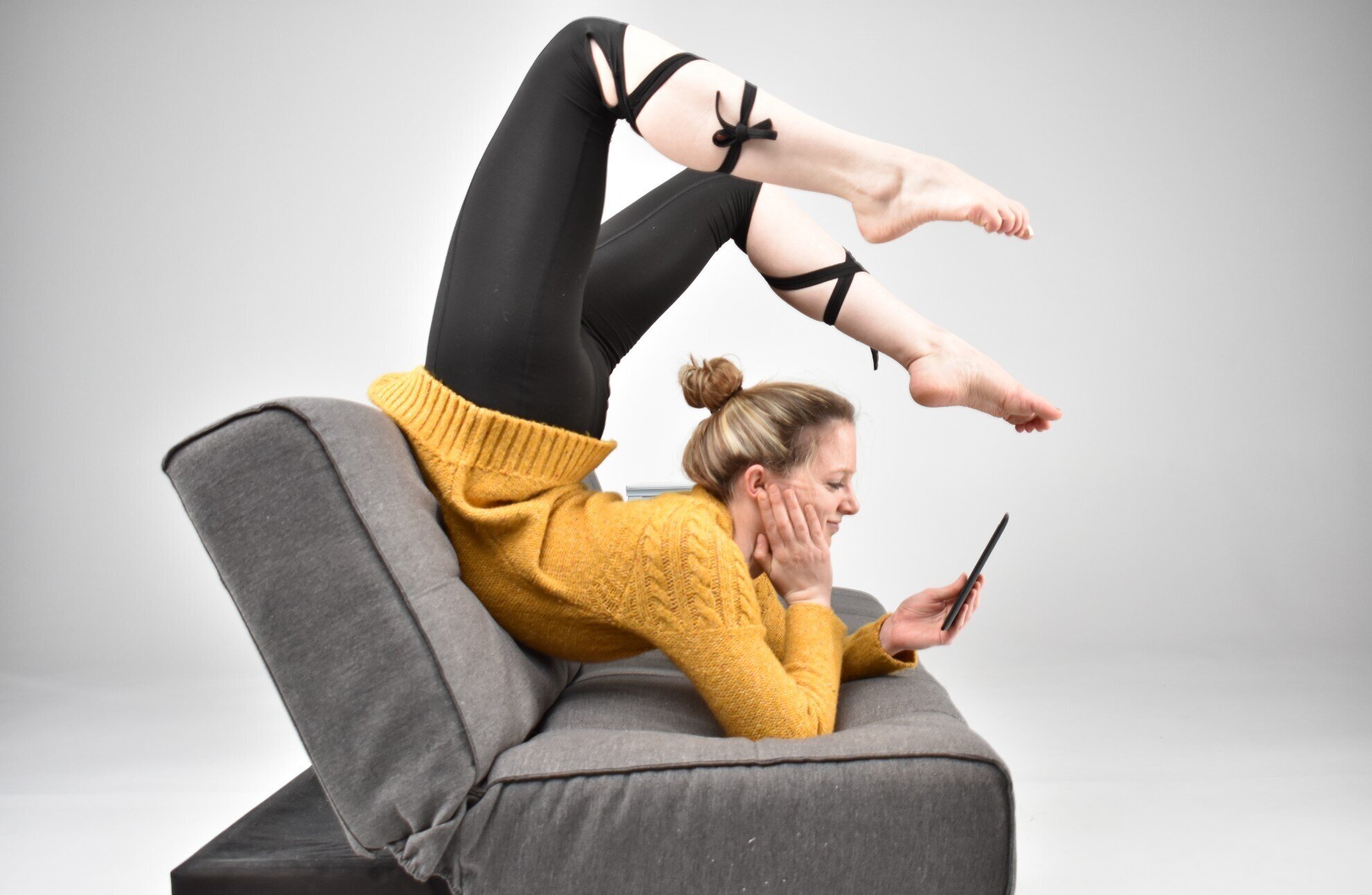TIPS, TRICKS & HOW-TOs
The Bendy Blog: Flexibility Training Articles
Filter posts by topic:
All Posts / Bridges / Contortion / Front Splits / General Back Flexibility / General Flexibility Tips / General Lower Body Flexibility / Middle Splits / Neurodynamics / Shoulders / Straddles / Yoga /
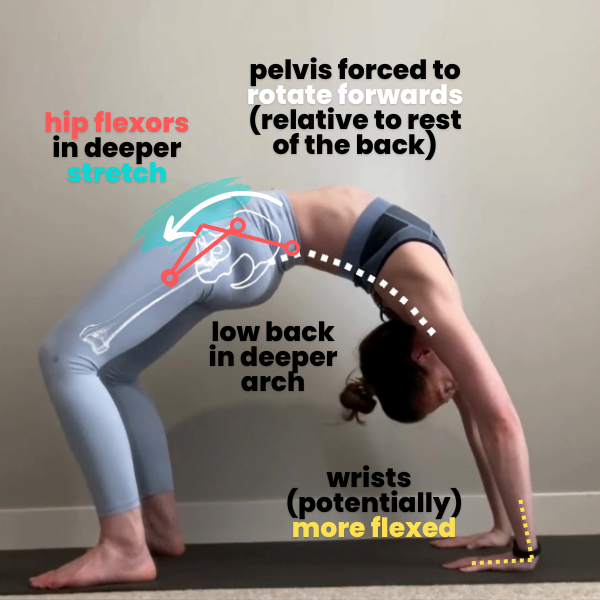
Is It OK To Lift the Heels in a Bridge (Full Wheel)?
This is a question I sometimes get from students (and even other flexibility instructors) - should we try to keep feet flat on the floor in a bridge, or is lifting the heels OK? The answer - like with so many flexibility questions - is it depends.

How to Get More Open Shoulders in a Bridge
If you feel like most of the bend in your bridge comes from your low back - you’re not alone! For the vast majority of the population, a bridge (or “full wheel” in yoga) is a low-back dominant pose, taking advantage of the natural curve of your lumbar spine. If your bendy aspirations are to even out your bend (and progress to deeper backbending poses), you’ll need to learn to recruit your shoulders and upper back.
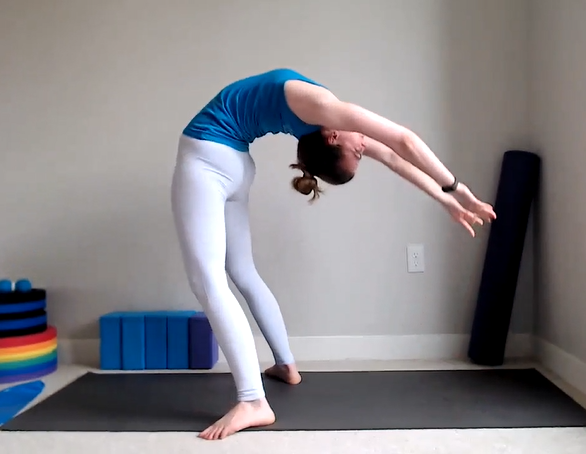
How to Stand Up from a Bridge (aka “Raise the Dead”)
Being able to stand back up from a bridge is a common goal for contortionists and advanced yogis alike - and it’s quite the challenge given the amount of glute, hip and core strength required! This is an advanced skill I would suggest working with a coach on if you haven’t done any form contortion training/classes before to make sure you understand the proper engagement to safely get into deep backbends.

How to “Sit” in a Chair Sit Bridge
A chair sit bridge is often one of the trickiest one for beginning contortionists to learn because it requires quite a bit of back and shoulder flexibility, AND solid body awareness of how to move your hips in space while you are engaging in a backbend. In this blog post I cover some prep drills to help learn the “butt coordination” (aka hip pike) required to sit in a chair sit bridge.

Pushing Up Into a Bridge: Progression
Are you struggling with the shoulder flexibility (and strength) needed to push up into a full bridge? Boy oh boy do I have a ridiculously thorough blog post for you! Read on for a full stretching routine that includes active and passive stretches to improve your shoulder overheard flexibility and press up strength!
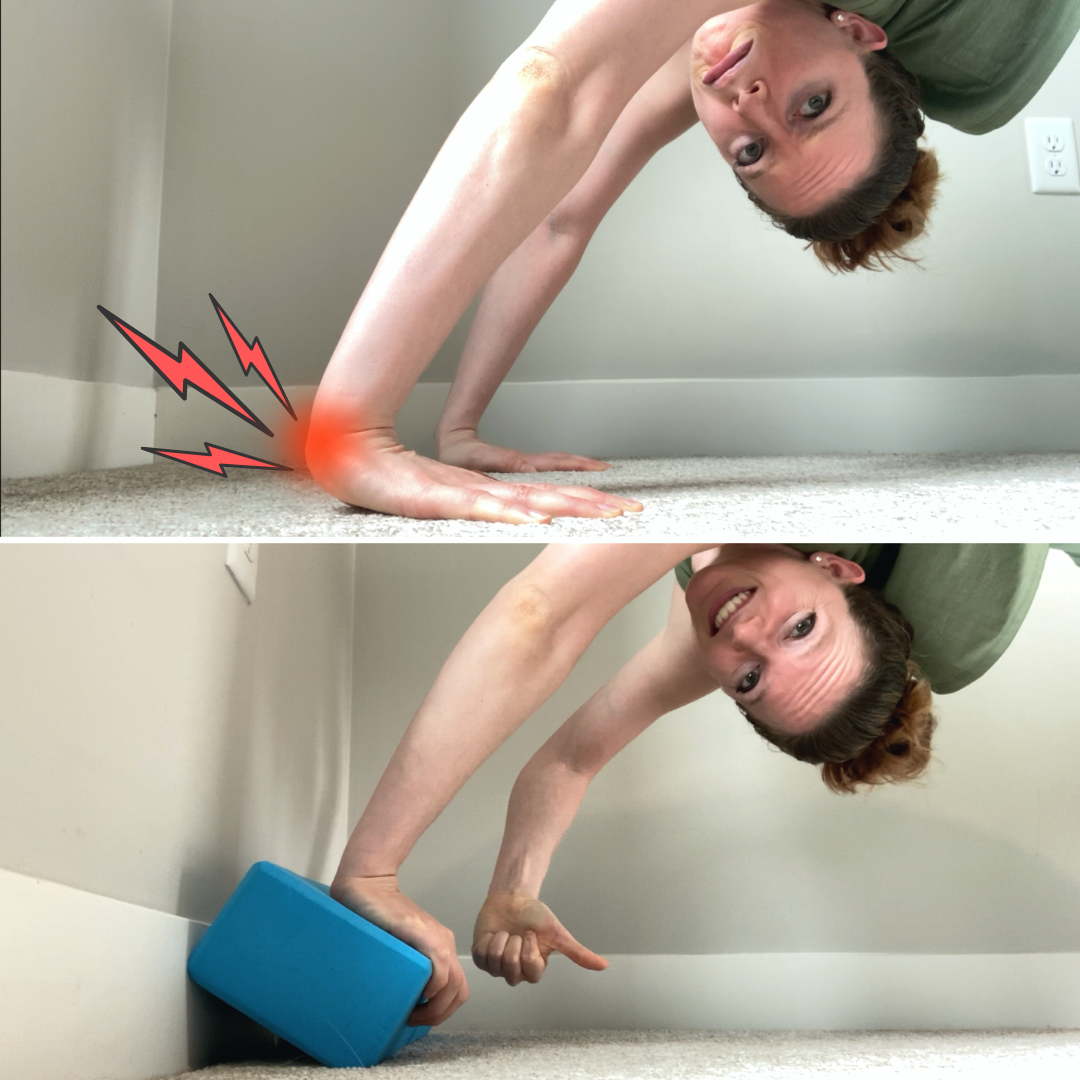
Help! My Wrists Hurt in a Bridge
If you’re new to working on bridges (aka “full wheel" pose”), you may experience some discomfort in your wrists since they’re not used to supporting your body weight in such a flexed position. Thankfully there are plenty of adjustments you can make to make your bridges more wrist-friendly in the short term while you work on your wrist strength & flexibility in the long-term (also continuing to work on your back and shoulder flexibility will help your wrists too - more on that later!).
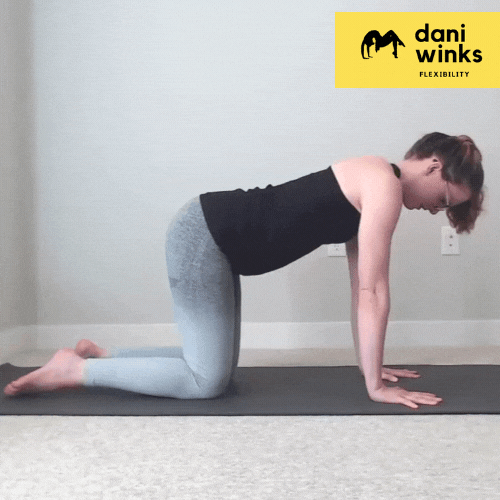
Wrist Warm Up for Bridges
If you’re new to working on poses like bridges (aka Full Wheel) you may notice that your wrists seem to get tired and worn out long before your arms, shoulders or back
Making sure your wrists are warmed up before practicing, as well as adding some conditioning exercises, is a great way to strengthen (and stretch!) your wrists over time so they can support you in your bridge.

“Big C” vs. “Little c” Backbend from Standing
A lot of people struggle with being able to backbend into a bridge from standing (sometimes called a “drop back”) - and rightly so, that shit’s hard. You need a lot of core and glute strength on top of general back and shoulder flexibility to be able to lower with control. The secret to a safer (and easier) backbend from standing is all about your center of gravity…
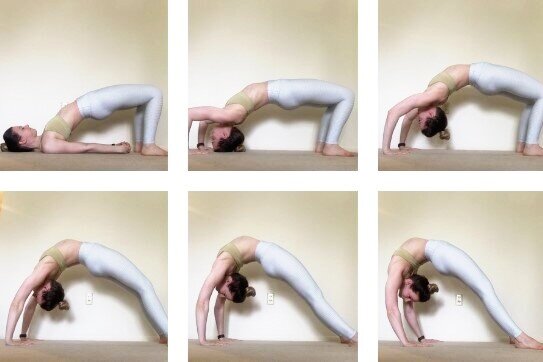
The Ultimate Bridge Pose Progression Guide
Being able to do a bridge is a common back flexibility goal, but if you can’t just “do a bridge” you may not know where to start! Here we have a simple progression of pose variations you can use as goals to practice and build the strength and control to eventually do a full bridge. Let’s get started!

